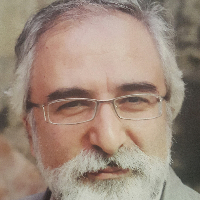The role of restorer in restoring monuments of the Islamic culture and civilization A review on principles of restoration approaches in restoration knowledge based on restoration human factor
In each restoration, at least two elements can be easily distinguished, “the item of restoring” (monuments and things) and “restoration human factor” (restorer). It is obvious that “restorer” as an interfering person in historical monument, which is the item of restoring, has the determinant role in restoration. On the other hand, although there are codified guidelines about interfering in historical monuments for restorers, the restorer’s personal traits and also his/her qualification in interfering is not considered specifically and independently. By referring to history of restoration and analyzing restoring theories and attitudes, it can be said that there was always more attention to “the item of restoring” than “the restoration human factor”. Therefore, most of the restoring guidelines are also codified based on theories that consider the restorer as an executive of guidelines, and there are no definition about the restorer and no evaluation of the qualification of him/her. However, in Islamic civilization scope it is completely different and the skill factor has had priority over principles and rules.
In this paper, at first, the author tries to explain these concepts and describe the relationship among them concerning the linear relationship among “civilization”, “culture”, and “thoughts”. Then he demonstrates the position of the “historical monuments” to these concepts and emphasize on the importance of restoration and protection in every civilization. The importance that not only concerns the relationship among thoughts, culture, and civilization, but also mentions this point that every civilization scope should describe its restoration method and restoration experiences have limitations which are limited to “thoughts and culture” of that scope. Therefore, for each civilization special approaches should be suggested and these approaches cannot be applied for other civilization scopes.
By this introduction it is obvious that all existing restoration advices which are mentioned in international patent, though valuable, belong to the western culture and civilization in modern era. Not only cannot they be applied to the traditional scopes (even of western traditional culture), but also they specially cannot be applied to traditional Islamic scopes. The author by giving this background would like to access the Islamic culture and civilization scope approaches, and tries to demonstrate the special approaches of this culture in this scope.
After a brief review on Islamic culture, the researcher come to this point that, similar to other cases in Islamic culture, the doer has the highest priority and tries to explain and demonstrate this aspect in the scope of restoration.
On the other hand, by concerning this point that the traits of the restorer are not mentioned in the protection and restoration history, the paper attempts to answer these questions: “What is the role of restorer from the point of view of theoreticians?” and “What are the qualifications of restorer in each approach?”, then compares this attitude with those in Islamic civilization and culture scope.
This paper, by analyzing the existing discussions in the history of restoration, tries to deduce the traits of restoration human factor (restorer) from restoration theories, then by concerning their philosophic principles categorizes their approaches. Thereby categorizing all the restoration advices in the history of protection and restoration into three approaches. Based on these approaches and referring to existing discussions in Islamic culture and civilization scope, it tries to extract the special approach in this scope, and finally put that as the fourth approach along the mentioned ones.
According to this study, existing approaches in the history of restoration are: (1) The first approach is based on restorer’s skills, experiences, and artistic and archeological studies of him/her and historically includes the first restorer to Jean Baptiste Lassus. (2) The second approach is based on scientific and positivism principles that Lassus is the representative of it. (3) The third approach is based on the creativity of the artist that Cesare Brandi created it by the influences of Martin Heidegger. (4) The fourth that belongs to the Islamic culture and civilization scope draws the qualification of the restorer based on cultural, faithful and thoughtful abilities of him/her that is called “Ahliyyat” and is based on religious faith of the restorer.
- حق عضویت دریافتی صرف حمایت از نشریات عضو و نگهداری، تکمیل و توسعه مگیران میشود.
- پرداخت حق اشتراک و دانلود مقالات اجازه بازنشر آن در سایر رسانههای چاپی و دیجیتال را به کاربر نمیدهد.


